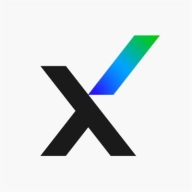

Trellix Network Detection and Response and Lumu compete in the network security category, focusing on advanced threat detection and response. Trellix leads with integration and network coverage, while Lumu holds an advantage in cost-effectiveness and streamlined implementation.
Features: Trellix Network Detection and Response offers robust threat analysis with seamless IT infrastructure integration, providing comprehensive network visibility. It supports deep analysis for malicious software, increased attack response, and multiple integrations with other cybersecurity tools. Lumu differentiates itself with continuous compromise assessment and quick delivery of actionable intelligence, emphasizing a simplified user interface, automated response, and the ability to integrate as a complementary tool with existing systems.
Room for Improvement: Trellix could improve its real-time response speed and further simplify its complex integration process for users without extensive technical knowledge. Its alert system could be refined to reduce unnecessary notifications. A more flexible pricing model could also be beneficial. Lumu might enhance its threat visibility prior to alarms going up and could expand its feature set to include deeper incident analysis. More customization options in alert configurations would be useful. Expanding direct integrations with additional third-party tools could also strengthen its offering.
Ease of Deployment and Customer Service: Trellix provides a flexible deployment model, well-suited for complex environments, with extensive backend support and dedicated service resources. Lumu is favored for quick setup, straightforward deployment, efficient onboarding, and responsive support, catering to businesses that seek simplicity and reduced resource investment in deployment procedures.
Pricing and ROI: Trellix generally involves higher initial costs with longer ROI realization, favorable for large enterprises with expansive networks. Lumu requires lower setup costs and offers a quicker ROI path, making it a budget-friendly solution without compromising value. This strategy suits businesses focusing on cost-effectiveness and a speedy ROI, presenting a significant advantage in competitive pricing dynamics.


Lumu Technologies is a cyber-security company that illuminates threats, attacks, and adversaries affecting enterprises worldwide. Using actionable intelligence, Lumu provides a radical way to secure networks by enhancing and augmenting existing defense capabilities established over the past 25 years.
Detect the undetectable and stop evasive attacks. Trellix Network Detection and Response (NDR) helps your team focus on real attacks, contain intrusions with speed and intelligence, and eliminate your cybersecurity weak points.
We monitor all Network Detection and Response (NDR) reviews to prevent fraudulent reviews and keep review quality high. We do not post reviews by company employees or direct competitors. We validate each review for authenticity via cross-reference with LinkedIn, and personal follow-up with the reviewer when necessary.